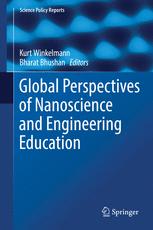

Most ebook files are in PDF format, so you can easily read them using various software such as Foxit Reader or directly on the Google Chrome browser.
Some ebook files are released by publishers in other formats such as .awz, .mobi, .epub, .fb2, etc. You may need to install specific software to read these formats on mobile/PC, such as Calibre.
Please read the tutorial at this link: https://ebookbell.com/faq
We offer FREE conversion to the popular formats you request; however, this may take some time. Therefore, right after payment, please email us, and we will try to provide the service as quickly as possible.
For some exceptional file formats or broken links (if any), please refrain from opening any disputes. Instead, email us first, and we will try to assist within a maximum of 6 hours.
EbookBell Team

0.0
0 reviewsThis book presents the perspectives of nanotechnology educators from around the world. Experts present the pressing challenges of teaching nanoscience and engineering to students in all levels of education, postsecondary and informal environments. The book was inspired by the 2014 NSF workshop for Nanoscience and Engineering Education. Since nanotechnology is a relatively new field, authors present recommendations for designing nanotechnology education programs. The chapters describe methods to teach specific topics, such as probe microscopy, size and scale, and nanomaterial safety, in classrooms around the world. Other chapters describe the ways that organizations like NNIN and the NISE Network have influenced informal nanotechnology education. Information technology plays a growing role in all types of education and several chapters are devoted to describing ways how educators can use online curricula for teaching nanotechnology to students from preschool to graduate school.